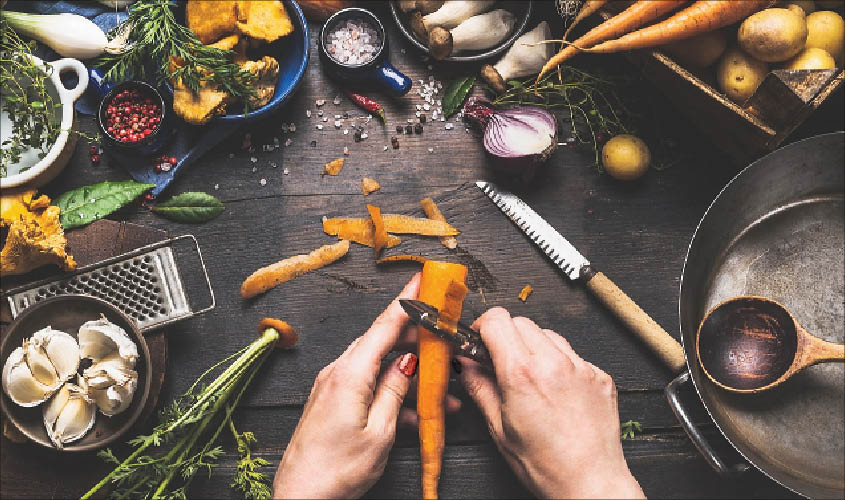Are you ready to have a green kitchen? Well, when It comes to having a more sustainable life and doing your part to make a difference in the global climate then every little thing you do counts. So below I’ve listed some small and easy steps that you can begin to implement to have a greener kitchen while also helping to reduce your consumption of energy and lessen your environmental footprint.
1. Only fill your container with as much water as you need.
The more water in your container the more energy you’ll need to boil the water and if you don’t use the water, you’ve just wasted energy. In the case of boiling water, some water will be lost as steam, so if you want a cup of coffee, all you need is a cup plus a tablespoon or so more.
2. If you’ve recently boiled some water.
If you have some left over why not use it for soups or to boil some vegetables instead of using tap cold water.

3. Keep lids on your saucepans while cooking.
This simple action helps to conserve heat and allows you to prepare your food at a much lower temperature. Many people don’t realize that simmering in a covered saucepan will cook the food just as fast as trying to quickly boil it in an uncovered pan.
4. When preparing food in the oven or on the stovetop, turn off the heat at least 5-10 minutes than you normally would but leave the food in the oven or on the heating element in a covered pan. Your food will continue cooking because the heat is not trapped inside the oven or pan and there’s still plenty of heat in the elements.
5. If your hot water heater is not all that good in heating up tap water then you should heat your water in a pot or kettle instead. This should be done whether you need hot water for recipes or simply washing the dishes.
6. Open and close the door to your oven as quickly as possible.
Each time you open the oven, the temperature drops on average about 20 degrees.
7. If you use the dishwasher to clean your dishes only run it when it’s full and put it on the economy cycle. If there is food left on plates be sure to rinse them under cold water before putting them into the dishwasher, especially if they will be sitting for while before you turn it on.
Avoid rinsing in hot water as that alone can consume as much energy as a full wash cycle.
8. Never leave the tap water running if you choose to wash dishes by hand and use as little water as possible. A good ideal is to have a couple of plastic bowls in the sink, one will be for your hot soapy water and the other will serve as rinse water to dip the once soiled dishes into.
9. Check the seal on your refrigerator to make sure it’s working properly. If you can close the door on a piece of paper and slide it around the edge, it’s time for you to get the seal replaced. Also, be careful not to fill your fridge too full, especially with items in the door trays as this can prevent the door from closing properly.

10. Switch all appliances to the “off” position when not in use. The amount of energy used by always-on clocks, lights and LEDs is quite startling to say the least.
The trick to having a green kitchen is to make a conscious effort to implement these simple tops, until you have completely replaced your old habits with these new, energy-saving habits.
Don’t fall into the trap of thinking that because you have to engage in activities that use excessive amounts of energy at work, that there’s not point in turning your appliances off at home. Every change you make towards a more sustainable lifestyle, no matter how small, makes a difference. In fact, changing the things you do have control over helps to offset the damage done by those things that are outside your control.









![How To Grow Cucumbers – The Definitive Guide [2021]: Planting, Taking Care, Harvesting & Storage](https://vilee.fi/eng/wp-content/uploads/2021/03/48054300777_ba366d3d15_b-150x150.jpg)


